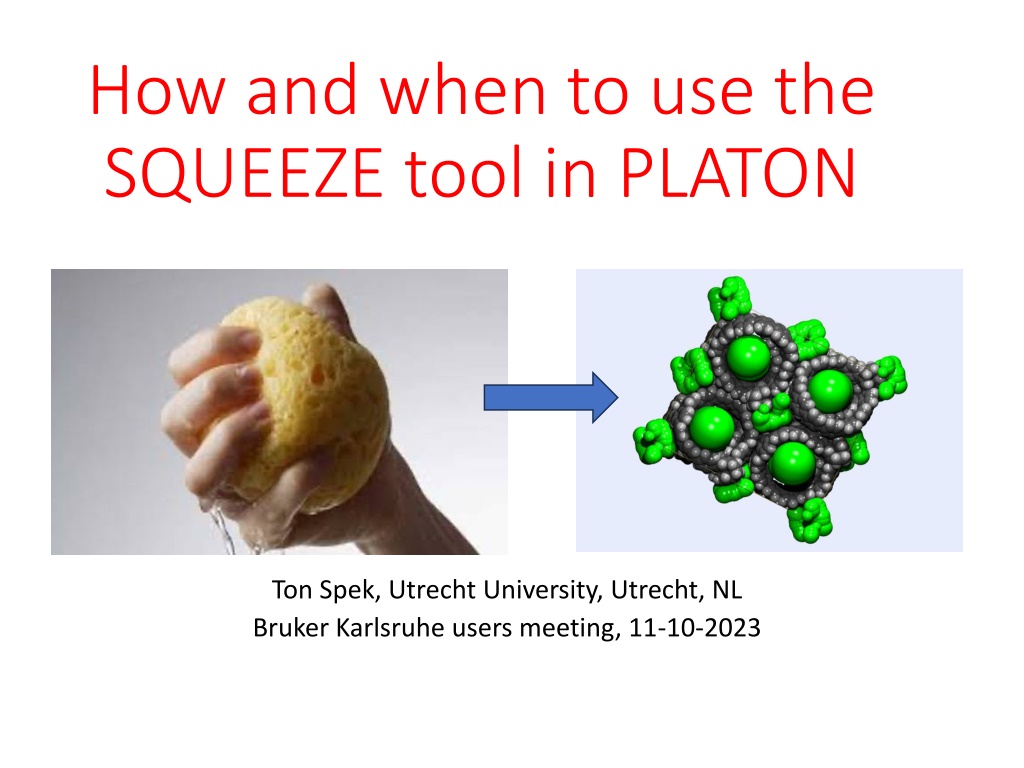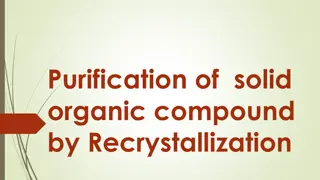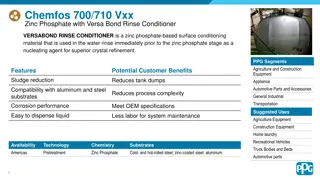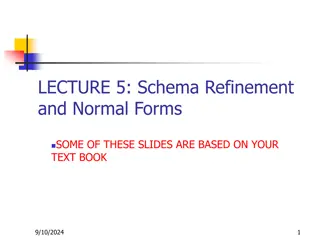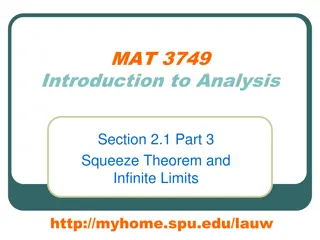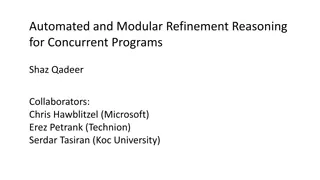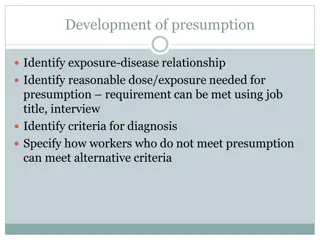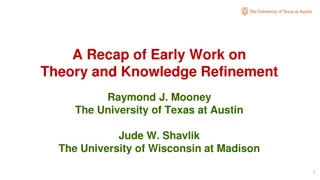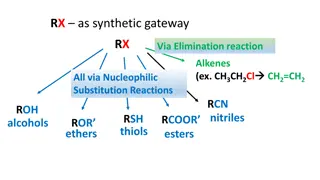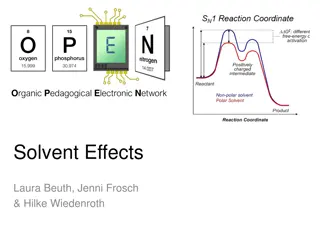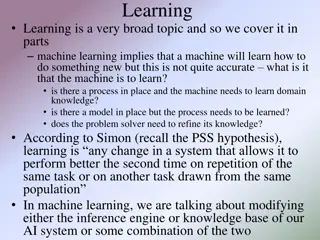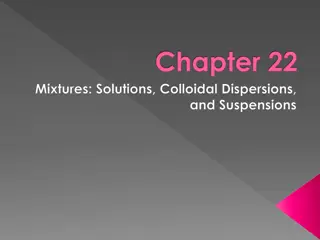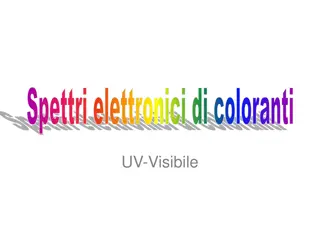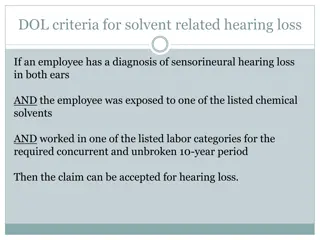Understanding the SQUEEZE Tool in PLATON for Solvent Refinement
The SQUEEZE tool in PLATON, developed by Utrecht University, offers an effective method for handling disordered solvent refinement in crystallography. This tool, part of the SHELXL suite, aids in modeling and refining solvent parameters when traditional methods may not suffice. Learn about its history, usage statistics, and how it addresses challenges in crystal structure analysis.
Download Presentation

Please find below an Image/Link to download the presentation.
The content on the website is provided AS IS for your information and personal use only. It may not be sold, licensed, or shared on other websites without obtaining consent from the author. Download presentation by click this link. If you encounter any issues during the download, it is possible that the publisher has removed the file from their server.
E N D
Presentation Transcript
How and when to use the SQUEEZE tool in PLATON Ton Spek, Utrecht University, Utrecht, NL Bruker Karlsruhe users meeting, 11-10-2023
The SQUEEZE Refinement Model Usage Statistics Reported SQUEEZE Usage Statistics as Prepared by the CCDC CSD2017: 26000 Note: % per year The current 2023 CSD release reports (out of 1270465 entries): 54546 PLATON/SQUEEZEd and 14252 OLEX2/MASKd Structure Reports. (for current 2023/partial: 2094 & 2073 respectively) Questions: Why is it so popular, when to use it and does is solve all problems meaningfully
The SQUEEZE tool as an Option to Handle the Disordered Solvent Refinement Problem SHELXL offers an extensive set of options to model and refine disordered solvent parameters. That is the preferred approach for handling cases of single solvent disorder with known composition and anions/cations (Charge Balance). In cases of multiple unknown solvent mixtures and smeared density, refinement of an elaborate disorder model might not work satisfactorily or even impossible. The SHELXL + SQUEEZE refinement model can then be tried when the exact nature of the solvent structure is not relevant for the geometry of the main molecule of interest. Possibly too easy when behind one click ..
History of the PLATON/SQUEEZE Tool The current implementation of the SQUEEZE tool is the third generation of a method that was published by us more than 33 years ago as the proof of concept suite of programs, BYPASS (van der Sluis & Spek (1990). Acta Cryst. A46, 194-201) - using SHELX76 refinement. The current version interfaces with SHELXL201x that avoids the need to subtract the solvent contribution from the observed data required when refining with SHELXL97. Documentation of the recommended procedure: A.L.Spek (2015) Acta Cryst. C71, 9-18 Note: OLEX2 includes both the native PLATON based SQUEEZE option and an independent implementation of the SQUEEZE concept, named MASK. They are similar but not identical.
The SQUEEZE Disorder Refinement Model The total electron density in the unit cell can be split up into two parts, rho1 & rho2, with two associated contributions to Fh(cal): Fh (cal) = F1h + F2h. F1h might be associated with the main molecule of interest that is parametrised in the usual way. F2h then represents the disordered solvent contribution to Fh (cal). Generally, a refined atomic disorder model will take care of the Fh2 part. The Fh2 part can also be supplied by an external program, read by SHELXL from a .fab file to be added as a nonrefined contribution to Fh(cal). PLATON/SQUEEZE supplies such a .fab file. It is obtained by back-Fourier transformation of the electron density found in the solvent accessible volume of the unitcell. The ABIN instruction informs SHELXL201n to search for and read the external .fab file with h,k,l, A2h, B2h data.
Solvent Accessible Voids A typical crystal structure has only in the order of 65% of the available space filled based on van der Waals radii. The remainder volume is in voids (cusps) in-between atoms (too small to accommodate an H-atom) Solvent accessible voids can be defined as regions in the structure that can accommodate at least a sphere with radius 1.2 Angstrom without intersecting with any of the van der Waals spheres assigned to each atom in the structure. The SOLV tool (used by SQUEEZE) identifies Solvent Accessible VOIDS in the unit cell.
The SQUEEZE Difference Density Map Loop Involves 1. Calculate the VOID-map 2. Calculate a difference electron density map 3. Use the VOID-map as a mask on the difference-map to set all density outside the VOID s to zero. 4. Back Fourier this masked difference map into the contribution of the disordered solvent (A(sol) & B(sol) to the structure factors [A(cal) & B(cal)] 5. Calculate an improved difference map with F(obs) phases based on the vectorial sum of F(cal) + F(sol) and F(cal) without the solvent contribution. 6. Recycle to 2 until convergence 7. Write the A(sol) & B(sol) values to a .fab file
SQUEEZE vs Disorder Model TEST EXAMPLE Comparison of the results of a classical refinement of a disordered solvent molecule with the results of a SHELXL201n/SQUEEZE based refinement. The starting point of this SQUEEZE test are the .cif and .fcf files obtained after a SHELXL201n refinement with the known solvent molecule omitted. Invoke the SQUEEZE tool on the main PLATON menu and click through the process.
SQUEEZE TEST EXAMPLE P21/c, 150K R = 0.0386 wR2 = 0.0966 S =1.037 Diethyl Ether Disordered over Inversion centre PART -1 BUHWUY Organometallics (2015), 34,2710-13
SQUEEZE SUMMARY Definition of VOIDS (white area): roll sphere with radius 1.2 A In this case there are two solvent accessible voids with Volume 177 A**3 in the unit cell SQUEEZE uses this area as a mask to recover the density In the white area from the difference density map by Iterative back-Fourier transformation into Fh2 (.fab)
Without Solvent Contribution With Solvent Contribution
Main Molecule Comparison R1 = 0.0386, wR2 = 0.0966 S = 1.037, 42 electrons C-C BP = 0.0036 Angstrom R1 = 0.0383, wR2 = 0.0960 S = 1.044, 41 electrons C-C BP = 0.0035 Angstrom Disorder Model Diethyl Ether Squeeze Model DiethylEther
SQUEEZE + SHELXL201n Refinement 1. Refine a non-solvent model with name.ins & name.hkl (Include ACTA record to create .fcf LIST 4 or 8, NO LIST 6) and no EXTI record) . 2. Run PLATON/SQUEEZE, based on name.cif & name.fcf from 1, either via the PLATON GUI or as the terminal instruction platon q name.cif . 3. Continue SHELXL refinement with the files name_sq.ins, name_sq.hkl & name_sq.fab from 2as shelxl name_sq 4. Inspect the .lis, .ps and .lst files and Validate the structure. Note: All details about the SQUEEZE job are appended automatically at the end of the .fab file and used by checkCIF. The original .hkl data are retained in the CIF for alternative refinement attempts or recycling with the now optimized name .res.
Next: Host Guest Example A literature example of an interesting host molecule along with a supposedly disordered 18- crown-6 guest. CSD: AFYCOX reported as containing unknown solvent OLEX2/MASKed
Unit cell Unit cell Packing in Packing in Pbca Pbca with Wide Pore Channels with Wide Pore Channels
Difference density map with supposedly disordered 18 Difference density map with supposedly disordered 18- -crown crown- -6 ether 6 ether
Is the Use of SQUEEZE/MASK useful in this case Yes, in showing that there are two differently sized (disordered) solvent voids with significant residual density not found/interpreted by brute-force SHELXT. Yes, in bringing R1 sufficiently down for a publishable host structure, when that is the main interest of the study. No, when the main interest is in the interesting host/guest interaction of the two circular molecules. No, the dataset is poor with lots of missing/omitted reflections and unreliable electron count recovered over the squeezed/maskd volume and R-values.
Requirements There should be no residual unresolved density in the discrete model region of the structure because of its impact on the difference map in the solvent region. The data set should be reasonably complete and with sufficient resolution [i.e. sin(theta)/lambda > 0.6]. Low temperature data may help a lot. There should be no unresolved charge balance issues that might effect the chemistry involved (e.g. The valency of a metal in the modelled part of the structure)
Limitations The reported electron count in the solvent region is meaningful only with the supply of a complete and reliable reflection data set. The SQUEEZE technique can not handle properly cases of coupled disorder effecting both the model and the solvent region. The solvent region is assumed not to contain significant anomalous scatterers (Friedels averaged) Designed for small molecule structures . Note: SQUEEZE can handle twinned structures via LIST 8 (temporary detwinned reflection data)
Thanks ! PLATON/SQUEEZE paper: A.L.spek (2018) Acta Cryst. C71, 9-18. http://www.platonsoft.nl/PLATON_HOW_TO.pdf Unix Source Code: http://www.platonsoft.nl/xraysoft Most recent MS-Windows PLATON executable: https://www.chem.gla.ac.uk/~louis/software/platon/
